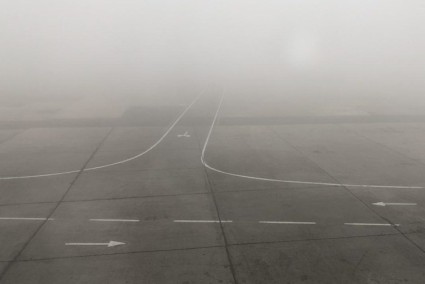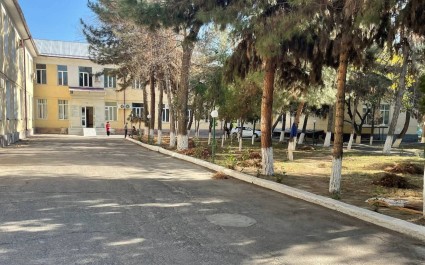Proceeds from the subsoil use tax in 2022 decreased by 1.92 trillion soums ($169.5 million), or 12.2% the Ministry of Economy and Finance said in a report on state budget revenues.
Last year, the state budget received 13.89 trillion soums on this tax, 15.81 trillion soums in 2021, and 16.4 trillion soums in 2020. while, the amount received is more than forecasted 13.76 trillion soums for the beginning of 2022.
The main part of the revenues from the subsoil use tax, or 63.7%, came from gold and copper mining enterprises with a state’s stake.
The decrease in tax revenues is due to the unification and reduction of tax rates for certain types of minerals. This happened despite the increase in the number of payers of this tax by 263, or from 1904 to 2167.
Last year, tax rates for natural gas were reduced from 30% to 10%, for oil and gas condensate - from 20% to 10%. As a result of this, as well as due to the introduction of the Netback mechanism in 2022, when determining the tax base, 538.1 billion soums remained at the disposal of taxpayers, the report added.
For enterprises with a predominant state’s stake, tax rates have been set on a larger scale:
- Navoi Mining and Metallurgical Combine (NMMC), Almalyk Mining and Metallurgical Combine (AMMC): 10% for gold and 15% for palladium, silver and copper;
- Uzbekneftegaz: 15% for oil, natural gas and gas condensate;
In addition, for enterprises with a predominant state’s stake that produce hydrocarbons, precious, non-ferrous, rare and radioactive metals (NMMC, AMMC and Uzbekneftegaz), these rates apply to the subsoil area, the production of which began after January 1, 2022. By decree of the President, higher rates of tax for the use of subsoil can be established for them.
When calculating the property tax of legal entities, the tax base is reduced by the average annual cost of new oil and gas wells in the first two years, starting from the month they are put into operation. Upon expiration of this tax benefit, these new wells will be subject to a tax rate reduced by 50% of the established rate for three years.
Gas production in 2022 fell by 4%, or from 53.8 billion to 51.6 billion cubic meters, gas condensate - by 2.8%, to 1.29 million tons, according to the Agency of Statistics. Oil production increased slightly - from 774 thousand to 787.8 thousand tons, or by 1.8%.
In 2022, Uzbekistan exported $910.9 million worth of gas, with most bound to China. The Chinese authorities announced the import of Uzbek gas worth $1.07 billion in 2022, which is by $159.5 million, or 18.2%, more than the data reported by Uzbekistan. The Agency of Statistics explained the reasons for the discrepancies by the peculiarities of the assessment of the customs value of goods and the difference in the time of accounting for goods. Meanwhile, Uzbekistan imported gas from Turkmenistan worth $281.9 million (+82.5%).
In addition, tax rates were reduced:
- for precious and non-ferrous metals - from 10% to 7%, and for gold for enterprises with a predominant state’s stake - from 15% to 10%, as a result of this, gold receipts decreased by 2.8 trillion soums;
- for radioactive metals, rare and rare earth elements - from 10% to 8%, for tungsten - from 10.4% to 2.7%;
- for non-metallic building materials - an average of 2 times, as a result, the amount of income from them decreased by 55 billion soums, of which 45 billion soums accounted for sand and gravel, despite an increase in its production by 2.5 million tons.
Limestone production by plants using coal in the cement production process has increased by almost 10 times. With a 2-fold decrease in the tax rate on limestone for cement production from 2022, the amount of tax revenues increased 4.2 times compared to 2021 and amounted to 34.1 billion soums.
The rest of the taxpayers mining limestone for cement production paid 246.3 billion soums of tax for subsoil use to the budget, which is 304.1 billion soums (or 2.2 times) less compared to 2021. This is due to a decrease in their volume of limestone production for the production of cement by 1.3 million tons and the tax rate for this type of mineral by 2 times, canceled in the Ministry of Economy and Finance.
As reported earlier, the Minister of Energy Zhurabek Mirzamakhmudov, in response to an investigation by Radio Ozodlik, reported that out of 294 fields, 118 belong to Uzbekneftegaz, and foreign companies work on 176 fields.
As of January 1, 2021, the largest proven reserves were managed by Uzbeknetfegaz - 934.1 billion cubic meters of gas (50% of current reserves). Lukoil worked at fields with gas reserves of 413.1 billion cubic meters (22.1%), Uz-Kor Gas Chemical — 109.6 billion cubic meters (5.9%), Surhan Gas Chemical — 106.6 billion cubic meters (5 .8%), Jizzakh Petroleum (now Saneg) - 84.9 billion cubic meters (4.5%). Most of the production was also accounted for by Uzbekneftegaz.














